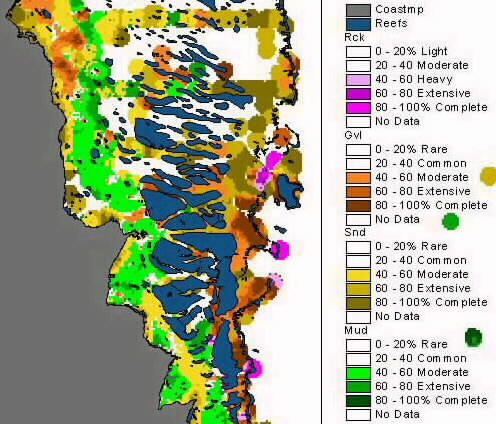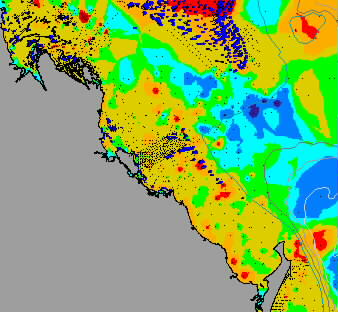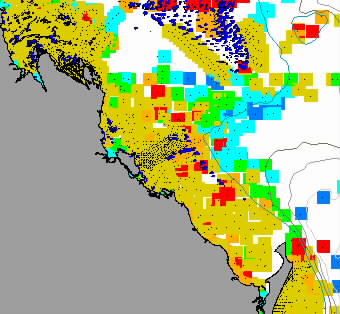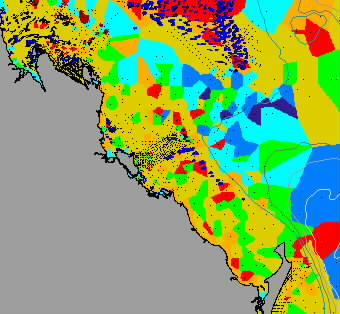 |
This type of visualization is a very effective method of outlining
the principal textural zones across a region.
Griddings of Rock, Gravel, Sand, Mud are generated from the ALL
file and imported into ArcView as separated themes with (*.avl) legends
"rck_gd", "gvl_gd", "snd_gd" and "mud_gd" applied. In dbSEABED there is
a convention to display rock, gravel, sand and mud as purple, red, yellow
and green hues respectively.
To generate grids, use the Query tool of Arcview to select against -99"
(the dbSEABED "No Data Value") for the parameter concerned. Then use:
Analyse/Surface/GridExtent=[template]/OutputGridCellSize[0.1deg]/<OK>
/IDW/ZValueField=[Parameter]/FizedRadius/ Radius=[10km]/Power=[2]/Barriers=[NoBarriers]/<OK>
to generate this particular type of grid coverage. Many other grid
types can be used with a dominance type of legend.
Slight areas of masking may occur between themes, so different orderings
of the themes may result in slightly different maps.
|







